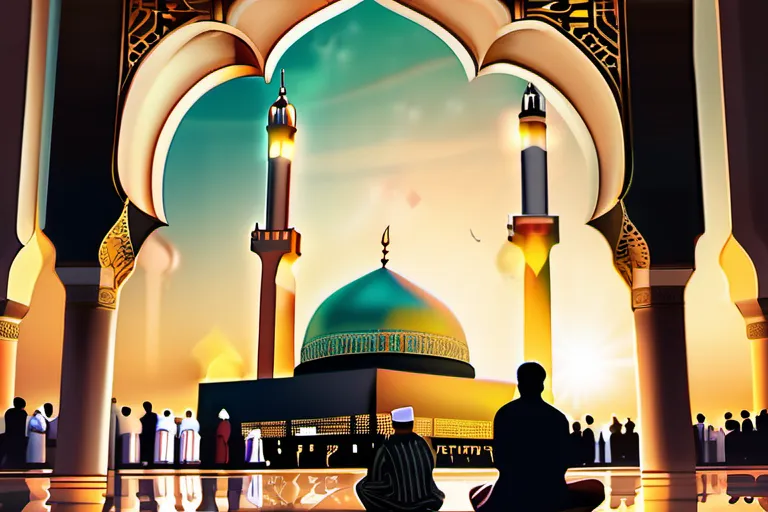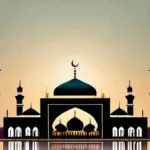Explore the beliefs, practices, and history of Sunni Muslims in this detailed guide.
Sunni Islam is the largest branch of Islam, followed by the majority of the world’s Muslim population. In this article, we delve into the fundamental beliefs, practices, and history of Sunni Muslims to provide a comprehensive understanding of this important religious tradition.
The Foundations of Sunni Islam
The Five Pillars of Islam form the foundational framework upon which Sunni Muslims build their daily lives and spiritual journey. These pillars are like the sturdy beams that hold up a house, ensuring its stability and integrity. Have you ever wondered how such a simple yet profound structure can guide millions of people in their faith?
Firstly, Shahada, or the declaration of faith, is akin to planting a seed – it marks the beginning of one’s spiritual journey. By reciting “There is no god but Allah, and Muhammad is his messenger,” you affirm your belief in the oneness of God and the prophethood of Muhammad. This act isn’t just about words; it’s an affirmation of faith that shapes one’s life.
Next comes Salat, or prayer. Imagine a river flowing through a desert, offering sustenance and life to everything around it. Prayer is like this river – it brings spiritual nourishment to the soul. Performing five daily prayers keeps the believer connected with God, reminding them of their duties and values.
Zakat, or charity, functions much like the roots of a tree that give back to the earth, ensuring its health and vitality. By giving a portion of one’s wealth to those in need, Muslims ensure social justice and compassion are upheld within society. It’s not just about money; it’s about fostering empathy and generosity.
Ramadan, the month of fasting, is like a deep cleanse for the soul – a period where one reflects on their past actions and seeks forgiveness. By abstaining from food and drink during daylight hours, Muslims focus on spiritual purity and self-discipline. Fasting teaches patience, empathy, and understanding.
Lastly, Hajj, or pilgrimage to Mecca, is the ultimate journey of faith – a metaphor for every believer’s quest to reach their true home, where they can stand before God in unity with all believers. This once-in-a-lifetime experience is a testament to the power of community and spiritual growth.
These pillars intertwine like threads in a tapestry, each adding its own unique pattern and color. Together, they create a rich fabric that guides Sunni Muslims through their faith journey, ensuring both individual piety and collective unity. Understanding these Five Pillars is key to grasping the essence of Sunni Islam.
The Quran: The Sacred Text of Sunni Muslims
The Quran, the holy book of Sunni Muslims, is more than just a collection of verses; it’s a guiding light that illuminates the path to understanding and practicing Sunni Islam. Have you ever pondered how this ancient text has shaped the lives of millions over centuries? The origins of the Quran are deeply intertwined with the life of the Prophet Muhammad, much like how the roots of a tree support its towering branches. The revelations received by the Prophet through the angel Gabriel began in the early 7th century and continued until his death, forming the basis of the Quran.
The Quran is not just read; it’s recited with such reverence that many believe every word carries divine weight. Each surah (chapter) tells a story, offers guidance, or provides moral lessons. For Sunni Muslims, the Quran is the ultimate source of truth and inspiration. Can you imagine how profound it must be to hear these verses in their original Arabic? The Quran has been preserved through meticulous recitations and writings, ensuring its integrity and purity across generations.
The role of the Quran extends beyond personal devotion; it’s a legal document that guides Sunni Muslims in every aspect of life. From the Five Pillars to social ethics, the Quran provides a framework for living a righteous life. Imagine if you could carry this book with you wherever you go, always having its teachings as your moral compass. The Quran’s influence is evident not only in religious practices but also in the daily lives of Muslims, making it a central pillar of Sunni Islam.
The significance of the Quran cannot be overstated; it’s like a beacon in the night, guiding lost souls towards light and salvation. Every word carries weight, every verse offers wisdom, and every recitation is an act of devotion. Understanding the Quran requires not just reading but engaging deeply with its meanings, for it holds the keys to understanding the heart of Sunni Islam.
The Prophet Muhammad: A Model for Muslims
The Prophet Muhammad, often revered as the final prophet sent by God, stands at the heart of Sunni Islam. But who exactly was he? Is he just a historical figure, or is there more to his story than meets the eye?
Imagine for a moment that you are traveling through time, landing in 7th century Arabia. You see a man named Muhammad, a trader by profession, leading a life filled with spiritual quest and eventual revelations. These revelations would eventually shape not just his destiny but also the course of history.
According to Sunni beliefs, Muhammad received these divine messages through the angel Gabriel over a period of 23 years. These teachings were compiled into what is now known as the Quran, serving as a guiding light for Muslims around the world. But beyond the written word, his life and actions became a model of behavior and faith.
How could one man’s life—filled with challenges, conflicts, and ultimately acceptance—become so pivotal in shaping not only personal conduct but also societal norms? The answer lies in his character. Muhammad was known for his honesty, kindness, and commitment to justice, qualities that resonated deeply within the hearts of his followers.
As a model, Muhammad demonstrated how one should live according to Islamic principles. His approach to conflict resolution, his treatment of women, and his emphasis on equality set standards that Muslims are encouraged to emulate in their daily lives. His teachings on charity, humility, and compassion have become foundational for the spiritual and moral fabric of Sunni communities.
Understanding Muhammad’s role is crucial because it provides a lens through which to view Islamic practices and beliefs. From his initial revelations to his establishment of the first mosque in Medina, every action he took contributed to shaping Sunni Islam as we know it today. His journey from a simple trader to a revered prophet offers a narrative that is both inspiring and instructive.
Sunni Islam’s Historical Development
Let’s dive into the rich tapestry of Sunni Islam‘s historical development, tracing its journey from its roots to the present day. Imagine Sunni Islam as a vast river flowing through time, shaped by key events and figures that molded its course.
Was it not the companions of the Prophet Muhammad who laid the foundation for this faith?
The Rashidun Caliphs, those first four successors to the Prophet, were pivotal in establishing early Sunni Islam. They fought against internal and external threats, setting precedents that would guide the community for centuries to come.
- Abu Bakr’s leadership during the Ridda wars brought unity to Arabia after the death of the Prophet.
- Umar ibn al-Khattab expanded the Islamic caliphate through military conquests, spreading Islam further.
- Uthman ibn Affan standardized the Qur’an and compiled it into a single volume for all Muslims.
- Ali ibn Abi Talib, the fourth Caliph, was the last of the Rashidun, facing significant opposition that would eventually divide the Muslim community.
The division between Sunni and Shia Muslims began during Ali’s rule. The Battle of Siffin in 657 CE saw a split over leadership, with many siding with Muawiyah I, leading to his eventual rise as the first Umayyad Caliph.
The Umayyads ruled from Damascus and were known for their expansionist policies. They established the city of Jerusalem’s Dome of the Rock and the Umayyad Mosque in Damascus. Yet, this period also faced significant opposition, with several revolts challenging their rule.
By the time the Abbasids came to power in 750 CE, they brought a new era marked by cultural flourishing. The Fatimid Caliphate emerged as an intellectual and artistic powerhouse, setting up the Al-Azhar Mosque in Cairo, which remains one of the oldest centers of higher learning.
How did these events shape Sunni Islam’s identity?
Through each era—from the early battles over leadership to the cultural heights of the Abbasids and Fatimids—Sunni Islam evolved, adapting to new challenges while preserving its core beliefs. Today, these historical figures continue to influence Sunni Muslims around the world, serving as role models in both governance and faith.
The river of Sunni Islam flows on, carrying the wisdom and struggles of those who came before us, guiding us toward a deeper understanding of our shared history and identity.
Contemporary Practices in Sunni Islam
What does a typical day look like for a Sunni Muslim? Is it filled with rituals, prayers, and community gatherings, or are there other facets to their daily lives that we might not immediately recognize?
The answer lies in the rich tapestry of Sunni Islam, where everyday practices blend seamlessly into religious observance. Imagine stepping into a Sunni household; you might find someone reciting verses from the Quran during prayer times, or perhaps preparing for a Salat al-Jumu’ah (Friday congregational prayer) with friends and family. These rituals are not just acts of devotion but also opportunities to connect with the divine and maintain spiritual discipline.
Cultural expressions within Sunni Islam add another layer of depth to daily life. Festivals like Eid al-Fitr and Eid al-Adha bring communities together, fostering a sense of unity and joy through food, music, and communal worship. These celebrations serve as a reminder of the broader community ties that exist beyond individual practices.
Moreover, the role of women in Sunni Islam is evolving but remains significant. While there are varying interpretations, many Sunni Muslims adhere to the teachings of Aisha bint Abu Bakr, emphasizing the importance of education and active participation in communal life. This balance between tradition and modernity reflects a dynamic and resilient faith that continues to adapt to changing times.
So, as you explore the contemporary practices within Sunni Islam, remember that it is not just about rituals but also about community, culture, and individual devotion intertwined in beautiful harmony. Each practice serves a purpose, whether it’s seeking closeness to God or strengthening bonds among believers.
Sunni Islam Around the World
Imagine walking through the bustling bazaars of Istanbul, where the aroma of spices and the sound of prayer mingle in the air. How would you explain the vibrant tapestry of Sunni Islam that thrives here? The city is a microcosm of the global diversity found within this faith. In Istanbul, as in many other parts of the world, Sunni Muslims have woven their unique cultural threads into the fabric of society.
Consider the differences between Turkey and Saudi Arabia. Both are predominantly Sunni countries, yet each presents a distinct flavor. In Turkey, the Sufi traditions play a significant role, with communities celebrating festivals that blend spiritual devotion with festive merriment. The Sufi whirling dervishes, spinning in circles as they seek to connect with the divine, are a breathtaking sight and highlight the mystical side of Sunni Islam.
In contrast, Saudi Arabia is known for its conservative interpretation of Sunni Islam, deeply influenced by Wahhabism. The Masjid al-Haram in Mecca stands at the heart of this tradition, where millions of pilgrims gather every year to perform Hajj. Here, the stark simplicity and strict adherence to religious texts create a profound sense of reverence.
Now think about the African continent, where Sunni Islam has been a cornerstone for centuries. In countries like Nigeria and Senegal, the faith has been shaped by indigenous traditions, creating a rich blend of cultural practices. For instance, the Tarikat, or brotherhoods, are prevalent in West Africa, combining Islamic teachings with local customs and music.
Travel further to Southeast Asia, where Sunni Islam is one of the main religions. In Malaysia, for example, mosques stand alongside modern skyscrapers, blending traditional architectural styles with contemporary urban landscapes. Here, the faith influences everything from social interactions to economic practices, reflecting a dynamic interplay between tradition and progress.
Each region tells a unique story, demonstrating how Sunni Islam adapts and evolves while maintaining its core principles. These diverse expressions reflect the broad spectrum of human experience, from mystical poetry in Turkey to bustling marketplaces in Istanbul, and the quiet reverence in Saudi Arabia’s holy sites. Each community brings its own interpretation to this rich tapestry, making Sunni Islam a global phenomenon that transcends borders and cultural divides.
Conclusion
 By examining the key tenets of Sunni Islam, its historical development, and contemporary practices, readers will gain a deeper appreciation for the richness and diversity of this global faith.
By examining the key tenets of Sunni Islam, its historical development, and contemporary practices, readers will gain a deeper appreciation for the richness and diversity of this global faith.











